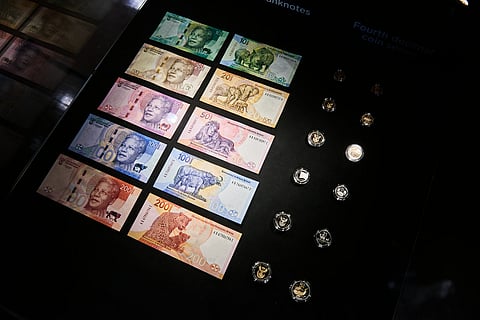Rand eclipses the Peso as new favourite against the Yen
The South African rand gains favour over the Japanese yen as Mexico's peso falls amid election uncertainties. Investors see potential in South Africa's market-friendly policies post-election, contrasting with Mexico's unclear direction. Jefferies predicts a profitable run for the rand-yen trade, marking a shift from Latin American to Eastern European currencies amid global economic volatility.
Sign up for your early morning brew of the BizNews Insider to keep you up to speed with the content that matters. The newsletter will land in your inbox at 5:30am weekdays. Register here.
Join us for BizNews' first investment-focused conference on Thursday, 12 September, in Hermanus, featuring top experts like Frans Cronje, Piet Viljoen, and more. Get insights on electricity and exploiting SA's gas bounty from new and familiar faces. Register here.
By Anya Andrianova and Vinícius Andrade*
The South African rand is emerging as the new favorite bet against the low-yielder Japanese yen, stealing the spotlight from the Mexican peso for the lucrative carry trade, according to Jefferies Financial Group Inc.
The rand's appeal grew in the wake of a May 29 election that reassured investors of a more business-friendly approach. By contrast, there has been a lack of clarity on policies from Claudia Sheinbaum, who won the vote in Mexico on June 2 to become the country's first female president-elect.
"The long rand versus Japanese yen trade could have a nice run in the next few months, with the rand replacing the peso as a new darling," Brad Bechtel, global head of foreign exchange at Jefferies, said in an interview.
The call from Jefferies is a window into how the market is souring on Latin American currencies, which have been a preferred destination for carry traders over the past years. The region, especially Brazil and Mexico, led the world in interest-rate hikes in their fight to tame inflation, luring investors who borrow in lower-yielding currencies like yen to buy those that offer higher yields.
Borrowing in Japanese yen to buy pesos, for example, has netted traders a 63% return over the past two years.
But the trade has unraveled this month as the Mexican peso lost more than 7% against the US dollar, becoming the worst performer among the 23 emerging-market peers tracked by Bloomberg. The Brazilian real is the third worst.
In Mexico, Sheinbaum's landslide victory in Mexico fueled fears the incoming leader could adopt market-unfriendly reforms, while money managers in Brazil are growing skeptical of President Luiz Inacio Lula da Silva's commitment to fiscal responsibility.
The rand, meanwhile, was the best performer in the period, hitting its strongest level in 10 months against the dollar this week as Cyril Ramaphosa was sworn in as president. This spike in optimism reflects investor confidence in the new government's potential to implement market-friendly policies and drive growth.
The peso trimmed some of its recent losses on Thursday after Sheinbaum named Marcelo Ebrard as her economy minister, allaying fears that the incoming leader could tap a less market-friendly name for the position.
Across emerging markets, Bechtel at Jefferies said he likes Poland and Central and Eastern Europe more broadly as Latin America's appeal has slipped.
The South African rand against the yen trade should provide returns in the coming months before traders reduce risk-on bets in emerging markets and shift to high-yielding developed world currencies like the Australian dollar and the New Zealand dollar, in preparation for the US elections.
The high-volatility environment, he said, will start around late August
Read also:
© 2024 Bloomberg L.P.

